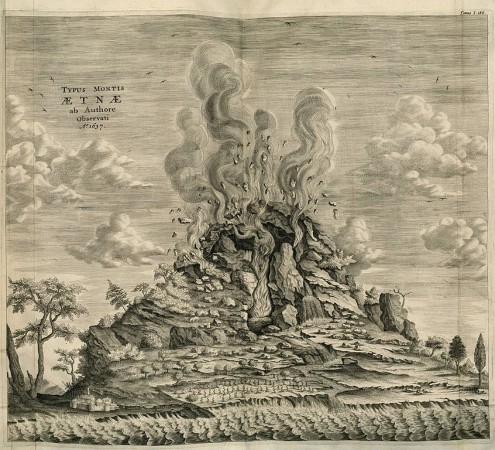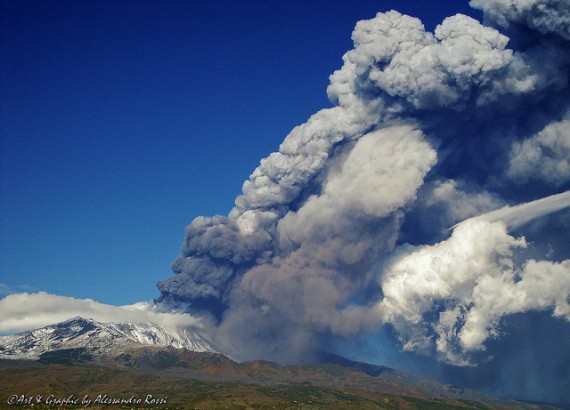Volcanoes have long fascinated people. They have know how dangerous they can be, but throughout history many have tried to figure what causes them. Here is the explanation given by the medieval scholar Albert the Great.
Albertus Magnus (c.1200-1280) was a German friar and later bishop who is best known for his scholarly work, writing on dozens of topics from zoology to love. He is considered patron saint of natural scientists, and someone who wanted people to examine things through experimentation and investigation.
Around the middle of the thirteenth-century he wrote On the Causes of the Properties of the Elements, where he discussed the nature of the earth. He took a look at various questions, such as what causes mountains and valleys (he believed they were formed by earthquakes), and after judging the opinions of his predecessors, offered his own analysis. Towards the end of his book he wrote about volcanoes, beginning with noting the most famous one in Europe, Mount Etna, which lies in Sicily.
There is a volcano like it in many places. For there was one that was in the province of Swabia that burned for many years from the fire that shepherds made on it and then later it was extinct, as in our times Etna is almost completely extinct. And similarly there is a burning mountain near Liege, and when the rain trickles down upon its edges, smoke rises from it as if from a furnace.
According to Albert, you needed two materials coming together in order to generate the fires underneath the earth – sulfur and naphtha. He describes how the former is a mineral that can be commonly found int the earth:
For sulfur burns underground easily either from the movement of the earth’s vapor, as fire is generated in a cloud, or from the motion and friction of the wind that has entered the ground through certain hollows, or even from the fact that the heat pressed into the ground by the sun’s rays is concentrated on one place by the surrounding cold, and then it kindles the materials found in that place.
Then he describes the second material, which was used in medieval warfare to cause fires:
For naphtha is a kind of pitch that is found in Persia, which has a glutinous and vicious fattiness that is very sticky and is somewhat like the lees of oil. When it is mixed together with sulfur, it becomes inflammable, and its fires adhered in an amazing fashion to whatever it is thrown against, and it can only be extinguished if the whole is covered at the same time.

Illustration of Mount Etna as observed by the author in 1637. From Athanasius Kircher’s Mundus Subterraneus, 1664.
Albert believed that these materials created hot springs, where they would continuously heat the water. According to him, the water would be unable to extinguish these fires. Meanwhile, on land, this combination would create a volcano:
For the material cause it that earth is sulfurous and mixed with oily naphtha, and the efficient cause is a vapor that is distributed in the ground and is unable to emerge. And because the sea water obstructs the ground’s pores and openings, for this reason it burns more quickly near the sea than it does elsewhere, and it burns as long as the matter has not been consumed, and it may burn for many years or perpetually if it happens that the matter is continuously replenished. And because a great deal of naphtha has been absorbed by certain rocks, when they are burned they remain very porous and light and float on the water, as pumice does.
Albert the Great’s book On the Causes of the Properties of the Elements, has been translated by Irven Resnick and published by Marquette University Press. Click here for more details.
See also: First historical evidence of a significant Mt. Etna eruption in 1224
See also: Volcanoes and the Climate Forcing of Carolingian Europe, A.D. 750–950















Pentru a putea adăuga comentarii trebuie să fii membru al altmarius !
Alătură-te reţelei altmarius